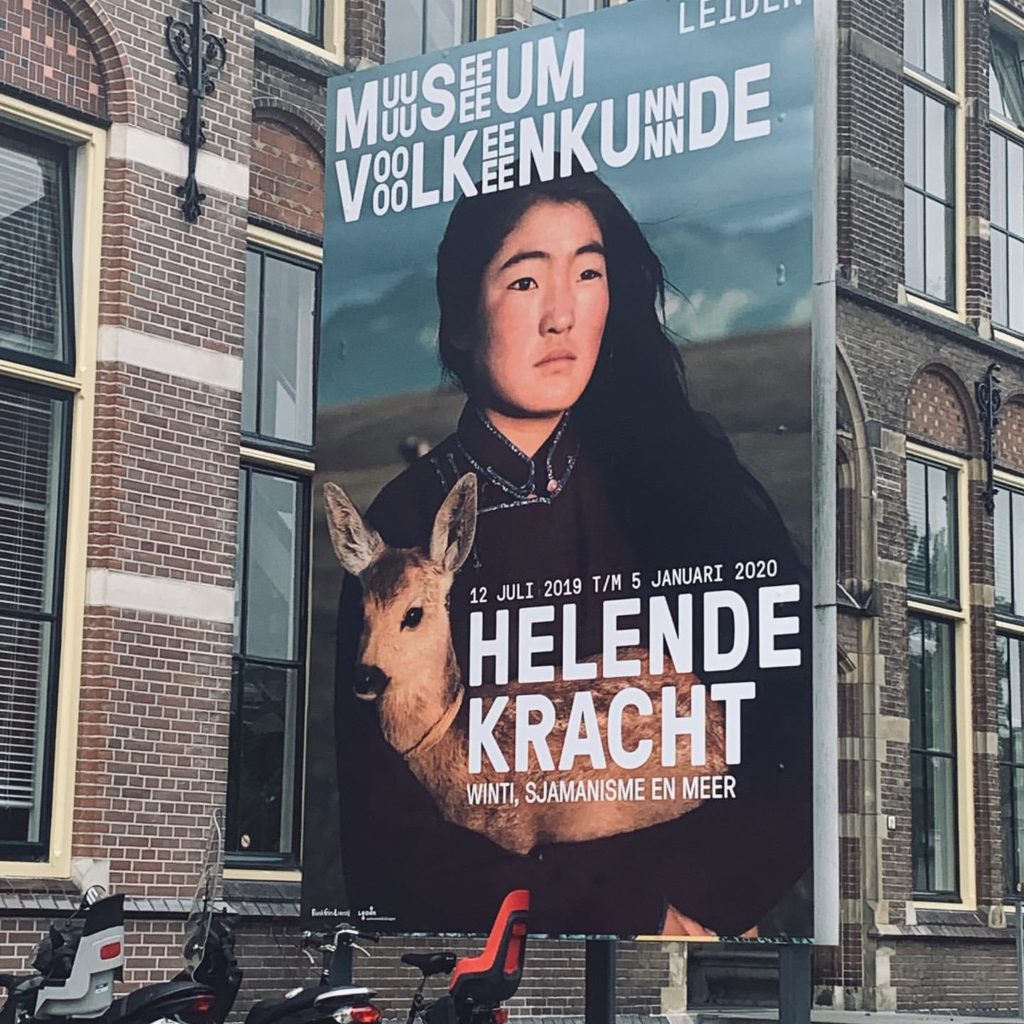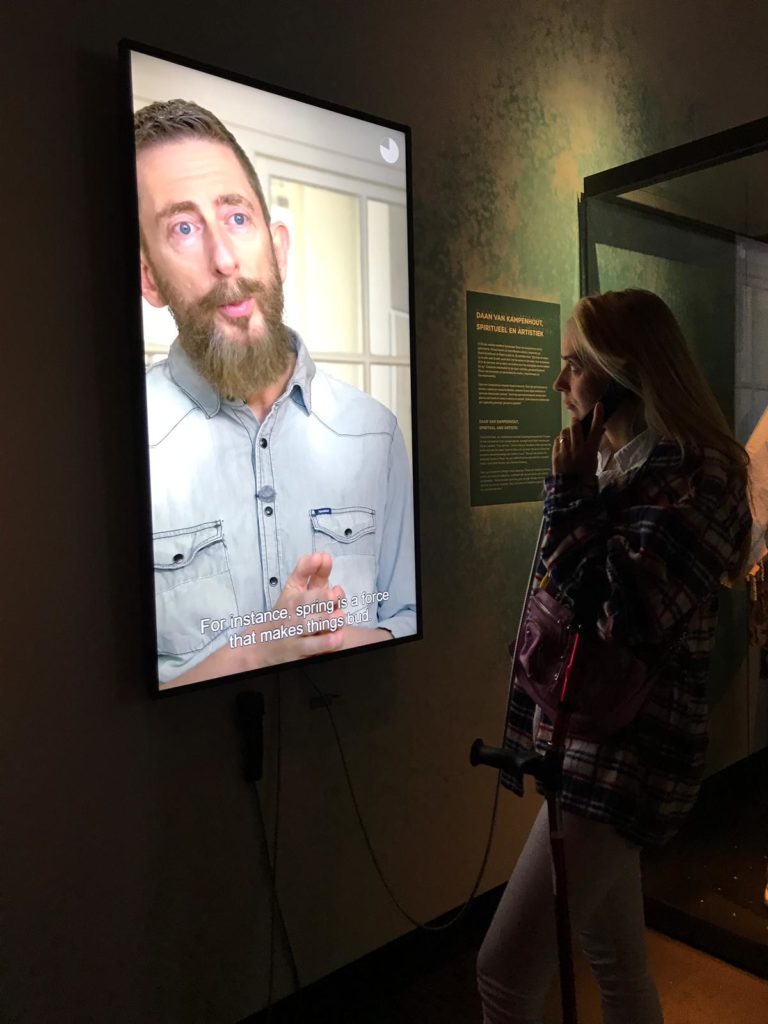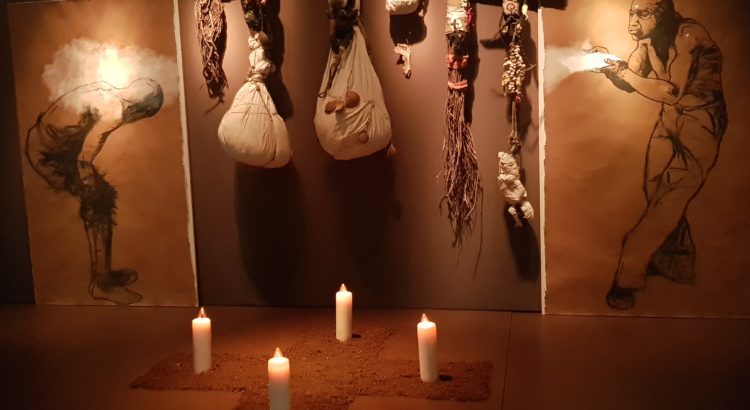Healing is a relative new and vague concept in Western Europe. Most people think of treatments with secret sessions involving drugs such as ayahuasca. But these treatments are centuries old and are more than just drug sessions. It’s a world where mind, body and soul come together in the healing process. These treatments and methods differ from the Western medical science but receives recently more attention in the Netherlands. Museum Volkenkunde takes part in this conversation and tries to eliminate the haziness about alternative healing. This is done by introducing people to alternative healing methods in the exhibition Healing and Power.
Mission Volkenkunde Museum

Museum Volkenkunde in Leiden is a museum about people with exhibitions about issues that are of concern to people worldwide. Health and Healing is such an issue. “Wherever they are in the world, people all face the same questions about life” states the site of the museum. The answers to these questions differ per culture. This cultural diversity around the world is reason for the museum to tell a human story. The museum aims to shape a global community and create an open attitude towards the world.
The exhibition Healing and Power shines a light on the numerous healing practices that are important to millions of people around the world. These practices are based on world views and knowledge systems that differ from Western medical science. Cunera Buijs and Wouter Welling are the curators of the exhibition. They wanted to follow these cultural healing traditions and get involved in them so that we and the Western medical science can learn from it. The curators admit that a great deal of empathy is required from the visitor. But if the visitor is willing to, states Cunera, a new world will open for them. Does this exhibition contribute to the creation of an open attitude towards the world when it comes to ‘alternative’ healing powers?
A Spiritual Journey
The first thing the visitor sees is a moving statue made by Sokari Douglas Camp of Freud who is connected to a West-African patient. They both turn around which creates a confusing situation. It shows that there is difference between Western medical science and the West-African traditions, which confuses both of them. These other medical traditions from over the world are central in this exhibition.


From here the exhibition takes you on a spiritual journey. You enter a calm atmosphere where the lights are dimmed, and you hear relaxing music, it feels like you’re in a meditation room. The result is that the visitor immediately feels at ease. This creates a more open mind for what is coming. Throughout the exhibition ritual specialists from the Netherlands take you further on the journey. The exhibition had the desire to work in partnership, they consulted ritual specialists and experts who gave the insight in their interpretations and practices. The visitor receives information from Witches, Wintis and Shamans. These interviews with specialists are played on large screens in the exhibition. The object labels are written from the point of view of the person or community concerned. What I found interesting is the fact that the exhibition makes no judgement as to whether these practices are effective or not. The specialists just talk about their worldview and their way of life and how these are connected to the collection of the museum. The specialists provide a unique insight into the world of the spirits. The informal interviews from the specialists in combination with the relaxing atmosphere makes it easier for the visitor to feel connected with or appreciate the other healing methods more.
Connecting with Healing
Besides the exhibition, the museum gives his visitors three other ways to connect with alternative healing. First of all, the museum organizes special theme days where the visitor can accompany healing power. These special days include a variety of activities such as tours, workshops and demonstrations. During these days, the visitor can go even deeper into the different healing traditions in the world.
Moreover, a special app has been designed for the exhibition. The visitor can download it himself. The app gives additional information, stories and other interesting facts. By downloading the app, the visitor can take the exhibition home. Here they can have a second look and read or watch some of the stories which appealed most to them. This motivates and activates the visitor to think even more about additional healing methods.
Finally, together with the curators of the Museum Volkenkunde the spiritual specialists will be heard in a podcast. Here you can learn more about the exhibition and its background.
Conclusion
What the Museum Volkenkunde want for their visitors is that the exhibitions broadens your worldview and that “they show that despite our differences we are all human”. The exhibition Healing and Power succeeds in presenting an open worldview towards healing traditions around the world. The specialists play a major role here. By their open way of telling about their practices they show the visitor that it’s nothing to be anxious about. This in combination with the calm and relaxing atmosphere really creates a new insight. Moreover, there are many opportunities for visitors to further expand their knowledge (app, podcast, theme days). This contributes to the active participation of the visitor during and after the exhibition. I personally really recommend this exhibition and the podcast because it provides a unique insight into this, before, unknown world.
Merel Udink
Information
The exhibition can be visited until 5 January 2020 at the Museum Volkenkunde, Steenstraat 1 Leiden.
Further reading
Dr. Reimer Schefold. Shamans in Siberut, Mentawai: Restoring Threatened Harmony (2019).
https://www.artoftheancestors.com/blog/healing-power-museum-volkenkunde
Special Theme-days
https://www.volkenkunde.nl/en/specials
App
